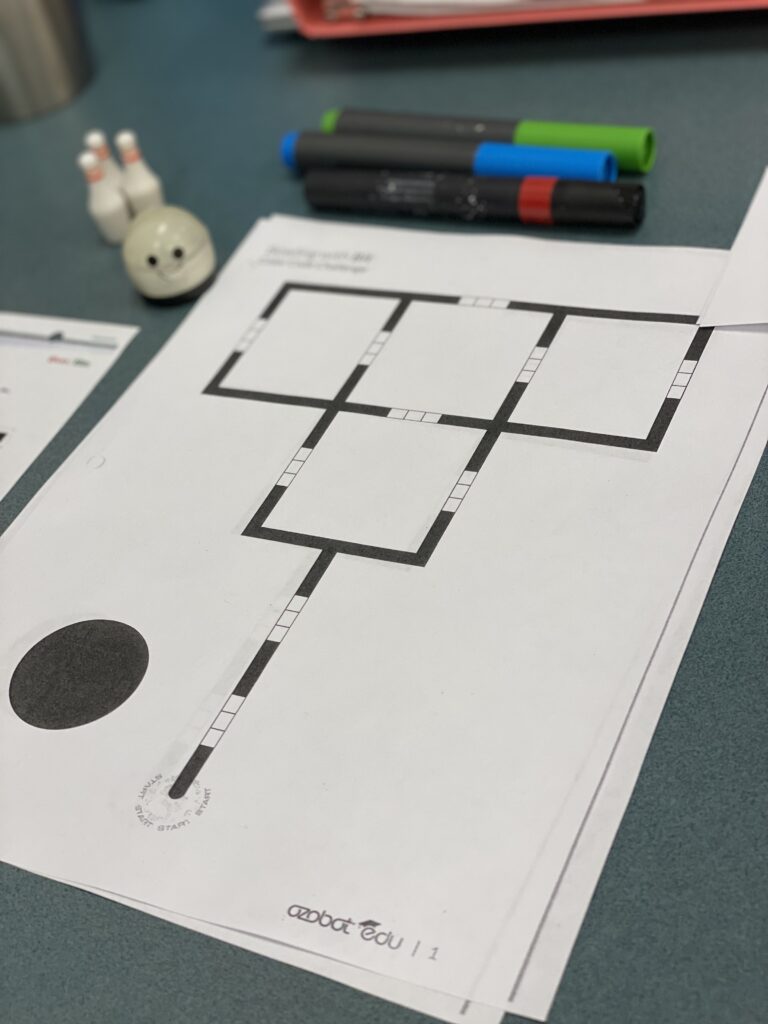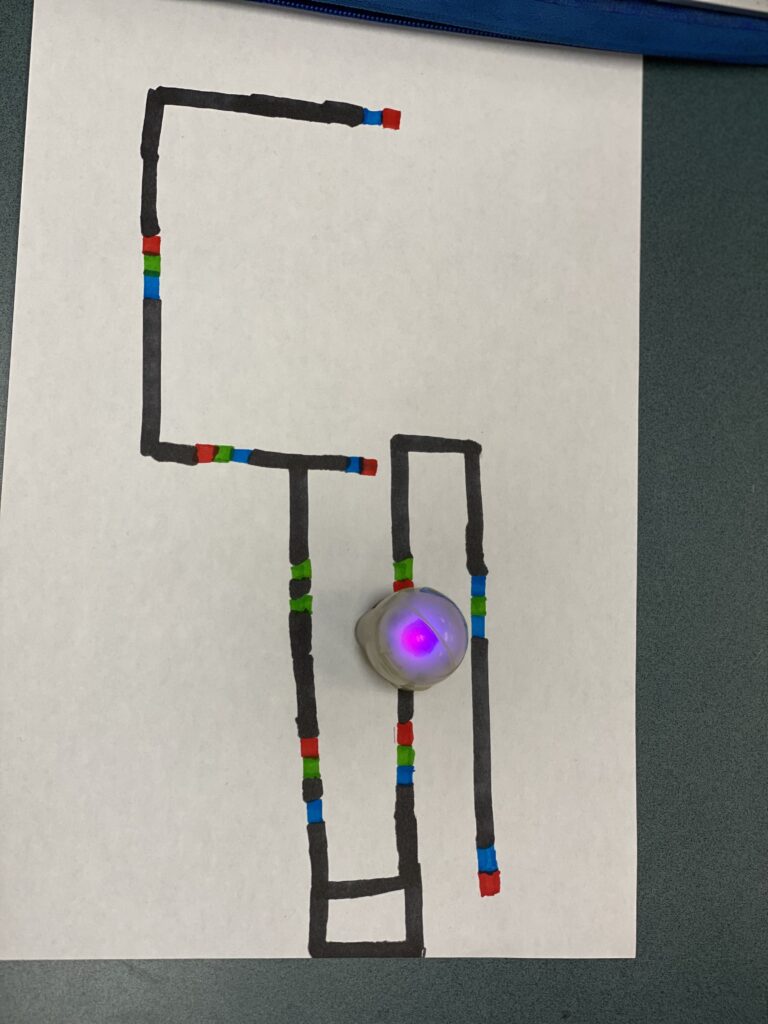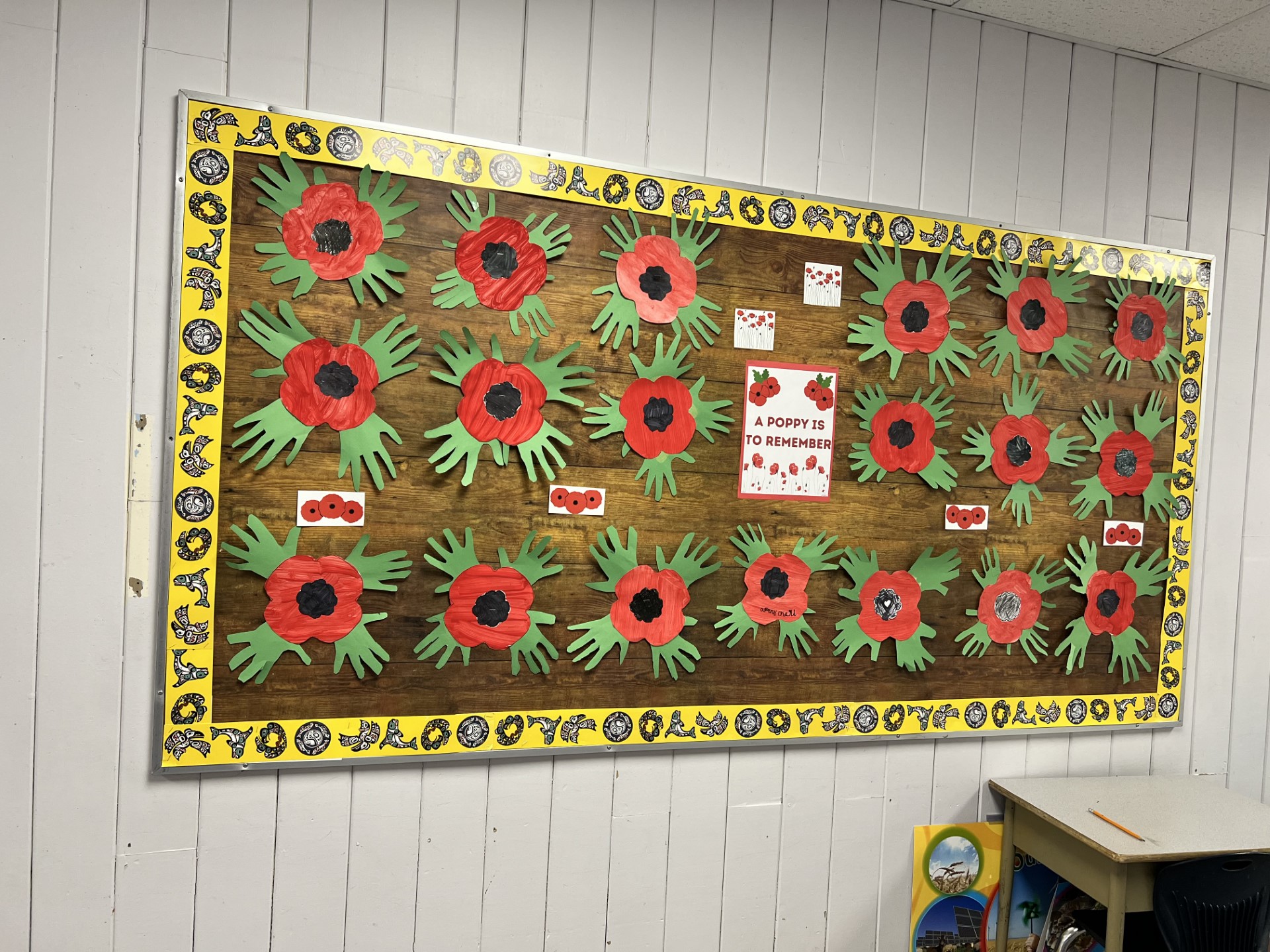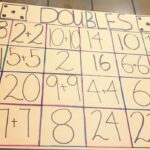Over the course of two twenty minute class time periods, one of my education classes got the opportunity to learn about coding through the use of Ozobots. The first class period was just for us to get to know Ozobots and how coding generally works. We were divided into pairs and given sheets with black lines and squares with the colour coding template already drawn onto them. We got the chance to look at the pre-programmed coding sheet and to pick which ones we wanted to colour onto the other sheet depending on what we wanted the Ozobot to be able to do (whether we wanted it to go fast, slow, snail speed, turbo speed etc.). The next time we worked with the Ozobots, we were given specific criteria we had to follow. We had to make our own path on a separate piece of paper this time, and the Ozobot had to move in a continuous straight line with the path consisting of at least four different codes. This time, a lot more cooperation and teamwork was needed between my partner and I. We had to find out where each other’s strengths were and work together in a way that highlighted them. One of us ended up reading the codes and drawing them onto the paper, while the other decided the direction of movement of the path for the Ozobot and which codes would work best where. This was a very fun activity, but I couldn’t help but find myself wondering what this activity would have to offer in the classroom other than just a chance to have some fun. It didn’t take me long to realize just how much learning was actually taking place under the surface of this activity.
At the end of this time period, we took a look at the 7 Principles of Learning to decide which ones were present in this activity. It was a unanimous decision between everyone in the class that every single principle was present here. Learners were at the center of this activity because they were responsible for their learning through engagement with both the Ozobot and their partner; if a code didn’t work the way it was supposed to, it was up to the learners to find a way to fix this. Cooperation and collaboration between partners was required so learning was occurring in a social environment that was bringing out positive emotions in both of us. One partner could end up being better at something than the other partner so one was learning from the other in a way that benefitted them both; if I was to do this activity again, I think I would be able to do what my partner did this time because she was able to teach me and show me how she was doing things. The expectations and criteria were very clear from the beginning and easy to follow. Assessment could occur at the end of the activity based on if our Ozobot was actually able to follow a straight line with at least four codes coloured into the lines. I am happy I got to participate in this activity because it showed me that learning should be fun, exciting, and engaging and should involve activities where these emotions are the main goal and the learning comes second. I can’t wait to learn more about coding activities so I can find ones I like to use in the classroom. Using coding activities will give my future students a chance to be at the center of their own learning and for me as the teacher to sit back and watch the learning occur.







